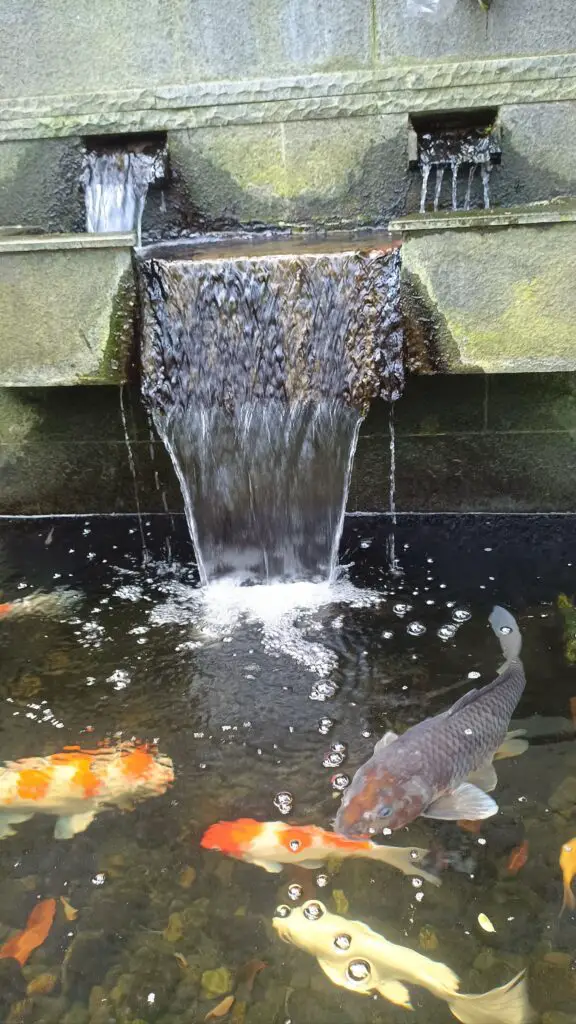
A koi pond is an exquisite addition to any garden. However, as with all garden features, some maintenance is required when you have a koi pond. Regular surface cleanings are one of them, but a deeper pond clean is sometimes necessary. So, how often should you vacuum your koi pond? We asked the experts in the field, and this is what they said.
Depending on the size of your pond, a thorough cleaning should be done every three to five years. When deep cleaning your pond, remove all the fish, plants, and water. Then, vacuum all the sludge away from the bottom of the pond. During this time, you should also clean out your filters and pumps.
Deep cleaning a koi pond is a massive task. However, it shouldn’t be necessary to deep clean your koi pond more than once every three years with regular maintenance and care. This article gives a step-by-step guide to cleaning your koi pond. We will also discuss the best time to do it and how to prevent your fish from stressing too much when the pond is cleaned.
Pro Tip: If you’re tired of wasting money and making costly mistakes on the koi-keeping hobby or are thinking about buying koi fish but don’t know where to start, I strongly suggest you check out this ebook. I recently read this ebook, and it contains SO much useful information, such as:
- 3 proven steps to identify koi fish diseases
- WARNING: 3 things you should NEVER do when it comes to caring for koi
- When to seek professional help when it comes to looking after your koi
When Should You Vacuum Your Koi Pond?
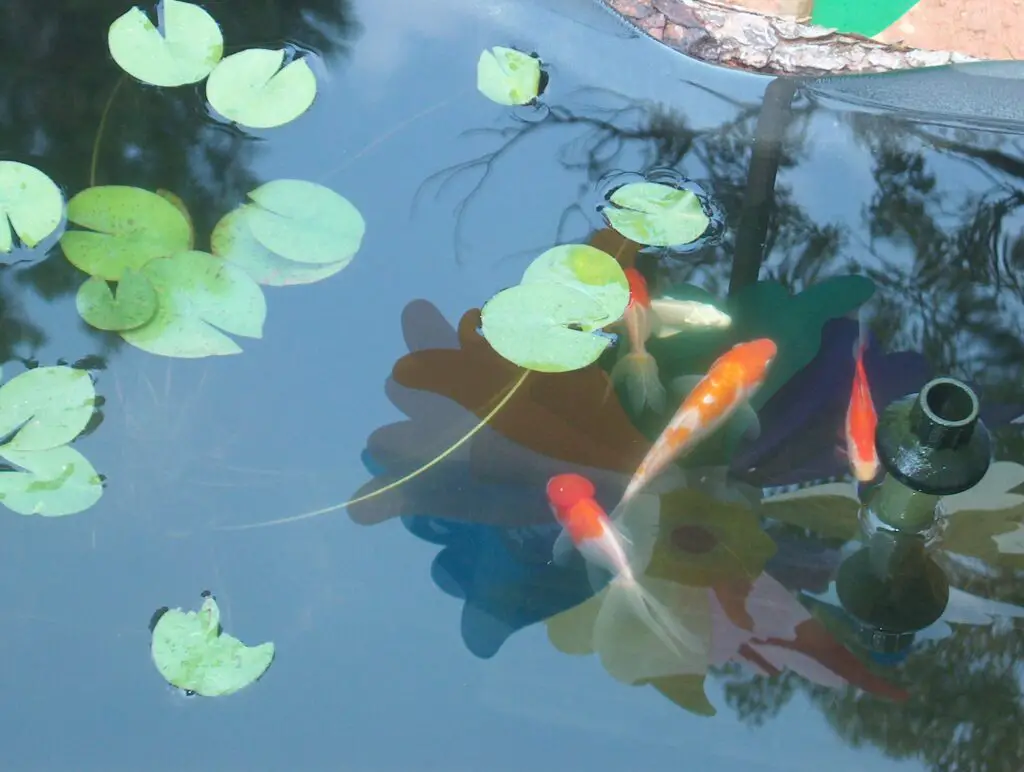
A koi pond, especially one that actually contains koi, needs to be kept clean and healthy for the fish to survive. This requires regular cleaning and maintenance to ensure the pond is inhabitable for the koi. While weekly maintenance, such as cleaning the water filter and removing any leaves from the top, is needed, you should also deep clean your pond every three years.
Experts recommend deep cleaning your pond in the fall. Although spring is traditionally the time for cleaning, koi fish will have a weakened immune system after the cold winter months. This means that they will stress easily and can die from the disruption.
Therefore, when deep cleaning a pond, do so in the fall, after the koi’s growing season. They will then be strong and healthy and are less likely to become overstressed. We will also discuss other ways of preventing your koi from stressing too much.
Now that you know when to clean your koi pond, you might be wondering how to do it. There are a few supplies you must gather before starting to deep clean and vacuum a koi pond. Dress in old clothes as deep cleaning a koi pond is a messy business. This is what you need to clean a koi pond:
- A square skimmer net to remove debris and the koi from the pond.
- A holding tank to keep the koi in while you clean the pond.
- De-chlorinator that is safe for koi.
- A pond vacuum.
- A hose with access to lukewarm water.
When you’ve gathered the supplies needed to deep clean the koi pond, it is time to start. This is how to clean and vacuum a koi pond.
Step 1: Clean The Surface Of The Pond
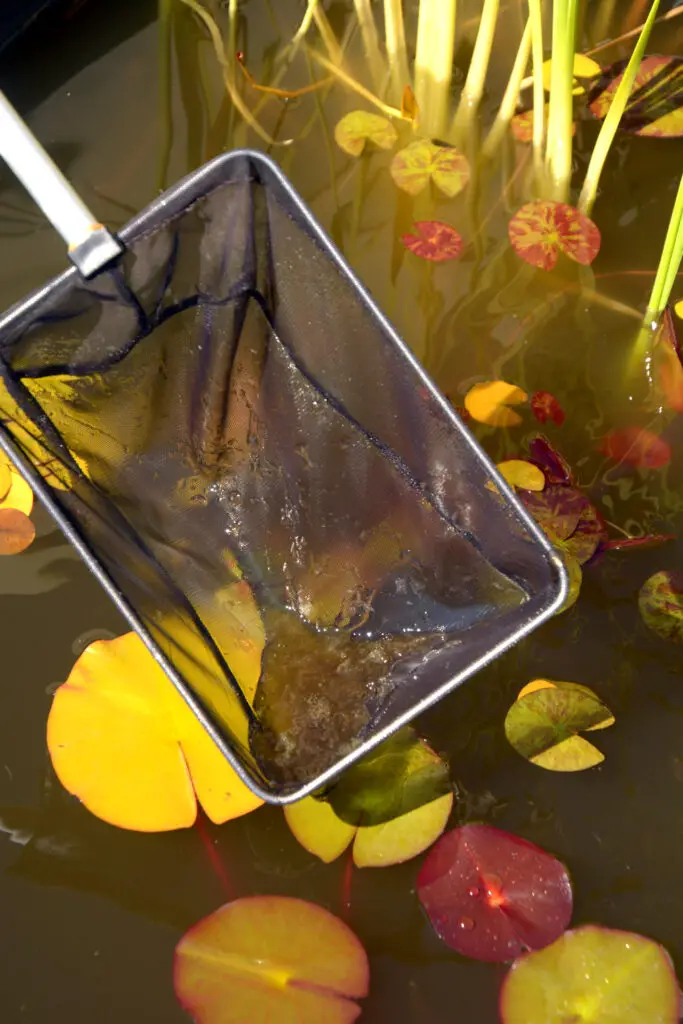
Use the skimmer net to remove leaves and floating debris from the pond’s surface. Doing this will make it easier to clean the bottom of the pond when you reach it. Also, remove any aquatic plants that are in the pond. Place them in a shaded area covered with newspaper.
Plants that grow underwater can be left for now because you will remove them later.
Step 2: Drain The Koi Pond
Use a pump to drain the koi pond until only about a foot of water remains. Be sure to drain the water to an area in your garden with good water drainage capacity. Pump the water away from your home, as the water might have a foul smell.
Pump some of the water into the koi’s water-holding tank. This will help prevent the koi from getting shocked as they would if they were placed in clean water. Leave about one foot’s water in the pond when turning the pump off.
Step 3: Remove The Koi And Aqua Plants From The Pond
Next, you can carefully remove the pond and underwater plants from the pond using the skimmer net. Place the koi in their holding tank, and the plants can be placed in a separate holding tank. Next, remove any artificial decorations from the pond and the pond pump and filter. When everything is removed, you can empty the pond.
Step 4: Give The Pond Some Time To Dry
When the pond is entirely empty, you can leave it for about one hour to air dry. This step is essential as it will make the pond easier to clean and vacuum. While the pond dries, you can clean out the pond pump and filters. Use only water as the pump and filter contain beneficial bacteria.
Also, scrub down the artificial pond decorations and water features inside the pond to ensure everything is clean. If needed, you can use a detergent (ensure it is koi safe). However, don’t use detergent unnecessarily, as it kills the beneficial bacteria.
Step 5: Vacuum The Pond
When the pond has dried somewhat, you can use the pond vacuum to vacuum the sludge at the pond’s bottom. Remove any dead plant material or dead frogs or fish. The sludge at the pond bottom also contains beneficial bacteria, so you don’t have to remove all the sludge.
Once you are done vacuuming, you can use the hose to wash the sides and bottom of the pond. Don’t remove the velvet algae growing in the pond because they’re beneficial for the koi and an essential part of their habitat.
Step 6: Replace The Water Pumps And Decorations
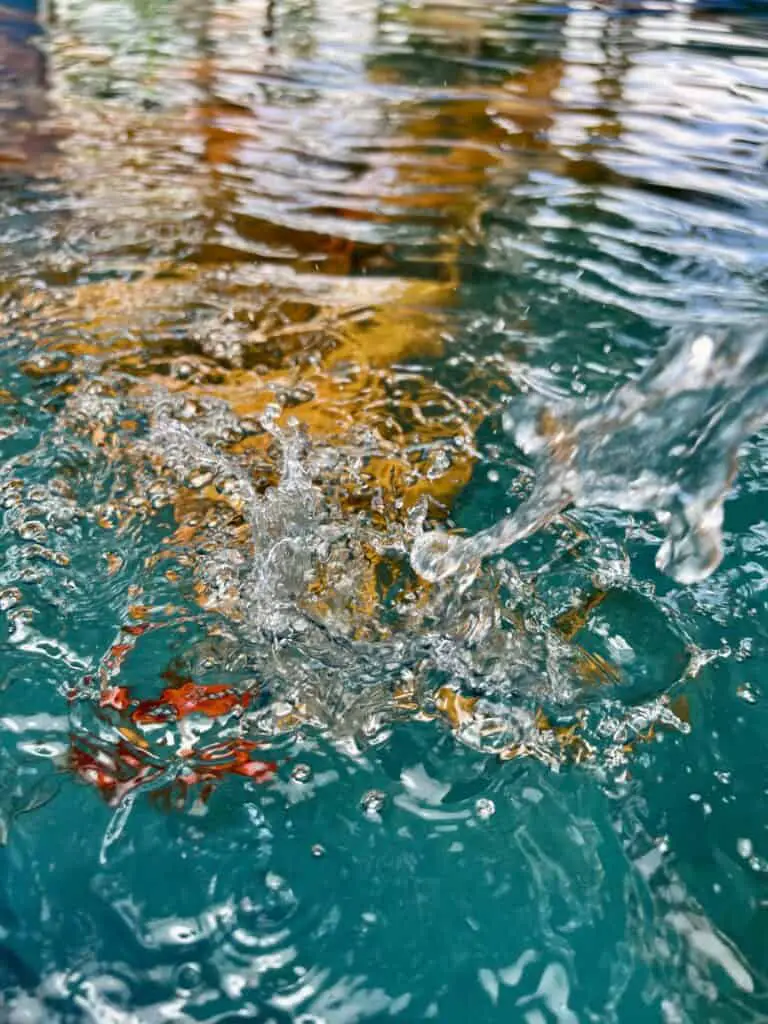
Now that your pond is thoroughly cleaned, you can place the pump, filter, and decorations back in the pond. Take this time to inspect the pond for any damages and cracks. Add more gravel if it is needed.
You can then start to fill the pond with lukewarm water. Do so slowly, as this will help keep the water temperature up. When the water is a foot deep, you can place the underwater plants back into the pond.
Remove some of the water in the koi’s holding tank and replace it with the new pond water. This will help the koi acclimate to the fresh water and prevent them from getting stressed when placed back in the pond.
When the pond is close to its original level, turn the pump on and ensure everything is in working order. Then, add the required amount of de-chlorinator to the pond to ensure the water is safe for the koi.
Step 7: Return The Koi To The Pond
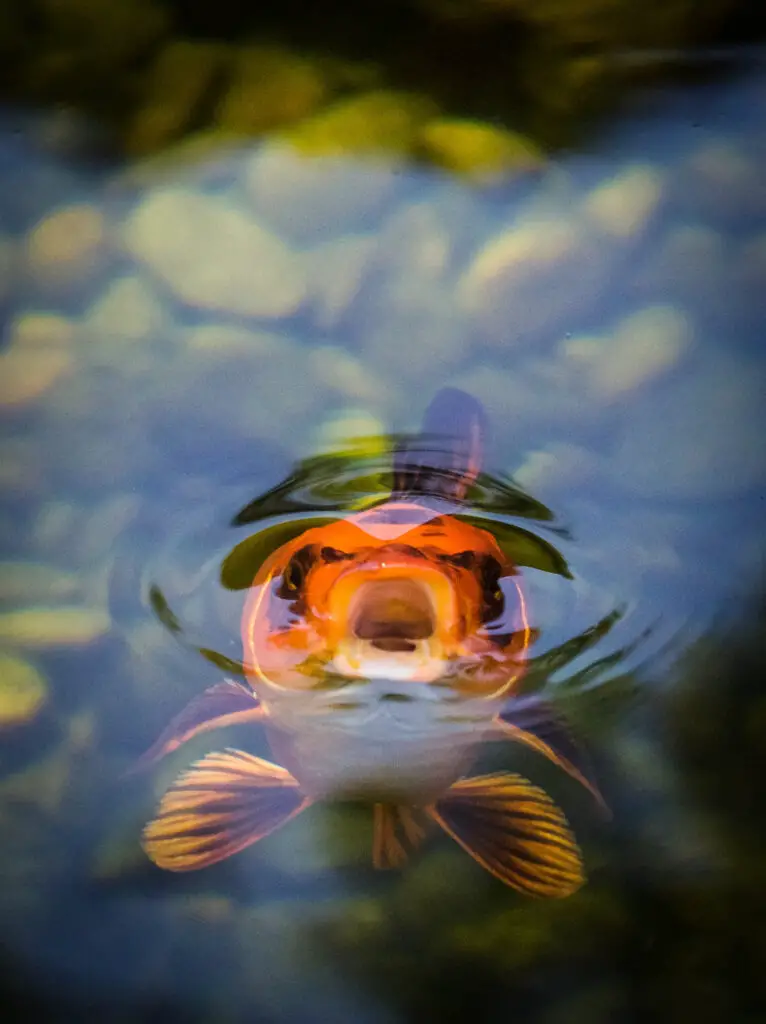
When the pond is almost filled with water, turn off the hose and let the pump run for a few hours. This will ensure the water is sufficiently oxygenated and the beneficial bacteria have started to work in the water. Then, when the water temperature is the same as before you cleaned the pond, you can place the fish back.
Carefully place the koi back in the pond and add the holding water to the pond. This will also help minimize the stress the koi are exposed to when the pond is cleaned. Now that all the labor is done, you can enjoy your spotless koi pond.
Conclusion
Koi ponds should be deep cleaned and vacuumed every three to five years. Clean the pond in the fall, when the fish are strong and less prone to stress. Pump out the water, remove the fish, and vacuum the bottom. Then, fill the pond with clean water and replace the fish.
We have shared several tips for ensuring your koi don’t get stressed or harmed during the cleaning process. Deep cleaning your koi pond is a big task, but necessary to ensure your koi are healthy and your pond is in top condition to support the fish.
References
https://www.gardeningknowhow.com/ornamental/water-plants/wgen/cleaning-garden-ponds.htm https://www.wikihow.com/Clean-a-Koi-Pond


